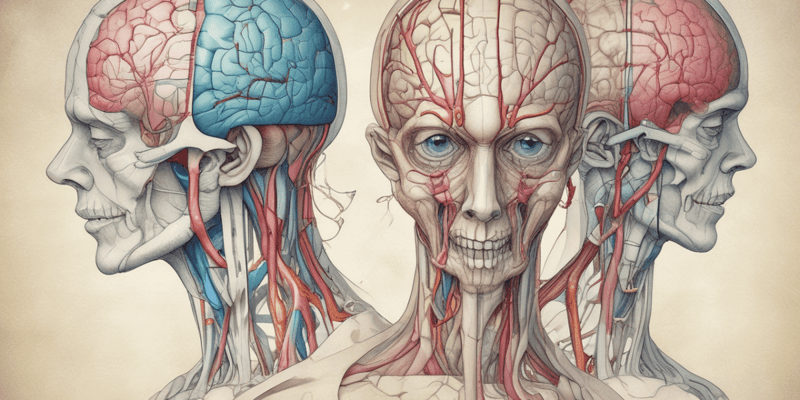Questions and Answers
During a neurological examination, which cranial nerve is responsible for the assessment of facial sensation including the forehead, cheek, and lower jaw on both sides of the face?
Cranial Nerve V
Which test during a neurological examination involves the patient clenching their jaw, and then being asked to open it while the examiner applies resistance?
Babinski Reflex Test
If a patient presents with misalignment of the eyes that is always present, which test should be performed to assess this condition?
Cover Test
What is the purpose of performing Thomas and Trendelenburg's tests during the assessment of the hip joint?
Signup and view all the answers
Which condition can be indicated if during the McMurray Test, a patient experiences pain with tibial internal rotation and varus stress?
Signup and view all the answers
During the assessment of spinal cord range of movement, what is an indicator of decreased mobility in arthritis?
Signup and view all the answers
In assessing the hip joint, what does contralateral hip lifting up during certain movements suggest?
Signup and view all the answers
What is the purpose of performing Rinne's test during a cranial nerve examination?
Signup and view all the answers
During Weber's test, where is the tuning fork placed to determine the hearing function?
Signup and view all the answers
What does it suggest if during Weber's test, the person hears the sound more in one ear than the other?
Signup and view all the answers
Which action indicates a potential lesion during vestibular testing?
Signup and view all the answers
Study Notes
Cranial Nerve Assessment
- The trigeminal nerve (CN V) is responsible for assessing facial sensation, including the forehead, cheek, and lower jaw on both sides of the face.
Jaw Function Assessment
- The masseter muscle test involves clenching the jaw and then opening it while the examiner applies resistance.
Eye Alignment Assessment
- The cover-uncover test is performed to assess misalignment of the eyes that is always present.
Hip Joint Assessment
- The purpose of performing Thomas and Trendelenburg's tests is to assess the hip joint.
- Contralateral hip lifting up during certain movements suggests hip instability or weakness.
- The McMurray Test is used to assess the hip joint, and pain with tibial internal rotation and varus stress may indicate a meniscal tear.
Spinal Cord Mobility Assessment
- Decreased mobility in arthritis is indicated by limited spinal cord range of movement.
Hearing Assessment
- The purpose of Rinne's test is to assess hearing function during a cranial nerve examination.
- During Weber's test, the tuning fork is placed on the midline of the forehead or the vertex of the skull to determine hearing function.
- If the person hears the sound more in one ear than the other during Weber's test, it suggests a conductive hearing loss in the ear where the sound is louder.
Vestibular Testing
- Nystagmus (abnormal eye movements) or lack of response to vestibular testing may indicate a potential lesion.
Studying That Suits You
Use AI to generate personalized quizzes and flashcards to suit your learning preferences.
Description
Test your knowledge on assessing cranial nerves including jaw jerk reflex, corneal reflex, facial movements, and interpreting Weber and Rinne's Tests for Cranial VIII examination.




